With the release of JWST’s first science images behind us, we now catch up on all the rocket launches of the past few days. Meanwhile, Bennu continues to be a favorite research topic and is the subject of three new papers released this week. Plus, pulsar-orbiting planets, and this week in rocket history, we look back at GEOTAIL.
Podcast
Show Notes
50th Starlink mission launches from California
Booster 7 has engine whoopsy
Russia launches navigation satellite
Rocket Lab launches mission for NRO
- Rocket Lab press release
- Mission Team Determines Cause of Communications Issues for NASA’s CAPSTONE (NASA)
Third Tianlian 2 relay satellite launches
First Vega C rocket launches successfully
Bennu’s rubble pile surface full of voids
- SwRI press release
- “Near-zero cohesion and loose packing of Bennu’s near subsurface revealed by spacecraft contact,” Kevin J. Walsh et al., 2022 July 7, Science Advances
- “Spacecraft sample collection and subsurface excavation of asteroid (101955) Bennu,” D. S. Lauretta et al., 2022 July 7, Science
Studying how dust hops, shapes asteroids
- University of Colorado press release
- “Fine-grained regolith loss on sub-km asteroids,” Hsiang-Wen Hsu et al., 2022 July 11, Nature Astronomy
Search finds 10 potential pulsar-orbiting planets
- RAS press release
This Week in Rocket History: GEOTAIL
- GEOTAIL mission page (JAXA)
- Measurements of Kelvin-Helmholtz Waves in Earth’s Magnetic Field (JAXA)
- About Magnetospheric Observation Satellite (GEOTAIL) (JAXA)
- The Magnetosphere Has a Large Intake of Solar Wind Energy (JAXA)
This Week in Rocket History: Goddard 3
- First liquid fuel rocket launched 90 years ago (Cosmos)
- Combustion Chamber, Rocket, Liquid Fuel, Robert H. Goddard, 1929 (National Air and Space Museum)
Transcript
Hey Pamela, we really let the launches get away from us covering JWST yesterday.
Oh, dear. How many are there?
Five. And three of them launched yesterday.
That’s not so bad.
But SpaceX’s Booster 7 had an oopsie.
Oh, but at least there is good news from history?
Yes! This Week in Rocket History, I have a Japanese mission that is studying the magnetosphere and a special treat for the end of the season.
Well, I guess I’ll have to listen to or watch this episode to find out what that treat is, everyone.
All of this and more, right here on the Daily Space.
I am your host Dr. Pamela Gay.
I am your host Erik Madaus.
And Beth Johnson will be joining us later in the show, and together, we’re here to put science in your brain.
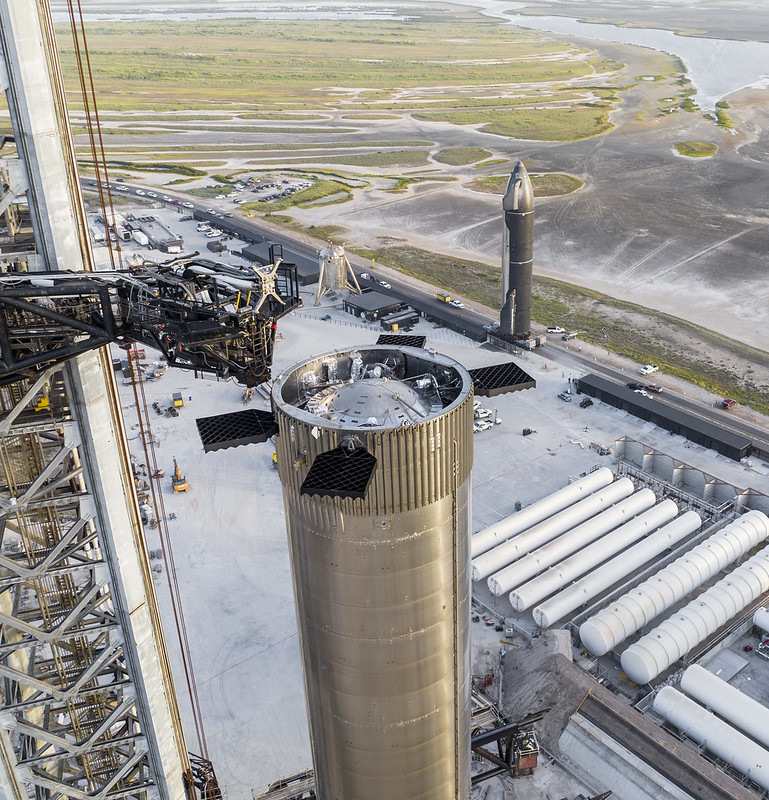
To get it out of the way at the top, the fiftieth Starlink mission launched on a Falcon 9 from Vandenberg Space Force Base on July 11 at 01:39 UTC. The mission launched 46 satellites into a new 97-degree shell of the constellation. The booster landing was successful.
In other SpaceX news, Booster 7 suffered some sort of explosion during testing of its Raptor 2 engines. During a test on July 11, the engines all started flowing oxygen out, which has been observed before as part of a startup test. After a couple of seconds of oxygen flow, the white vapor turned to flames, and debris went flying. Video shot by observers miles away recorded a loud bang. Those videos were posted to Twitter, and SpaceX’s CEO commented in a now-deleted tweet that it was “just booster testing”. Two hours later, he admitted that it was “actually not good”. He further commented there was a risk of “fuel-air explosion risk” with liquid propellants.
As of recording this episode, no reason for the anomaly has been revealed.
We missed it happening this weekend, but Russia launched their latest Glonass-K navigation satellite using a Soyuz 2.1B/Fregat rocket on July 7. The launch was successful.
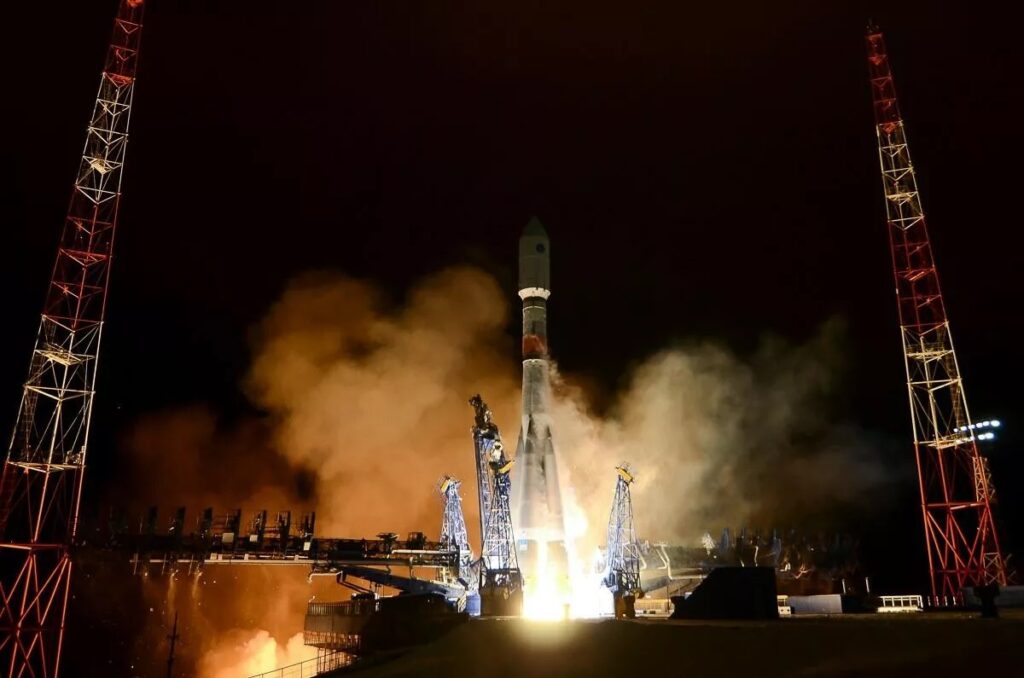
In the first of two launches on July 13, at 06:00 UTC, Rocket Lab launched the NROL-162 mission from LC-1A at their launch site on the Mahia Peninsula in New Zealand. The launch was successful, inserting an unspecified number of classified satellites into orbit. No recovery attempt was conducted.
Rocket Lab continued their tradition of delightful mission names, giving this one Wise One Looks Ahead. This mission is the first of two NRO missions that Rocket Lab will launch in a short period of time. After this launch, NROL-199, nicknamed Antipodean Adventure is scheduled to go up no earlier than July 22 from the other pad at Rocket Lab’s launch site, LC-1B.
In related news, Rocket Lab is still in communication with its Lunar Photon space tug almost 700,000 kilometers from Earth. It performed one further burn of its Hyper Curie engine after separating CAPSTONE and is now off doing a mission of its own.
Rounding the last bend with this clown car race of launch coverage, on July 12 at 16:30 UTC, a Long March 3B launched the third Tianlian 2 relay satellite into geostationary transfer orbit from the Xichang Satellite Launch Center in China. Once in geostationary orbit, the satellite will be used to send and receive data from various satellites and even China’s space station. Tianlian 2 will also relay telemetry from rockets as they head to orbit.
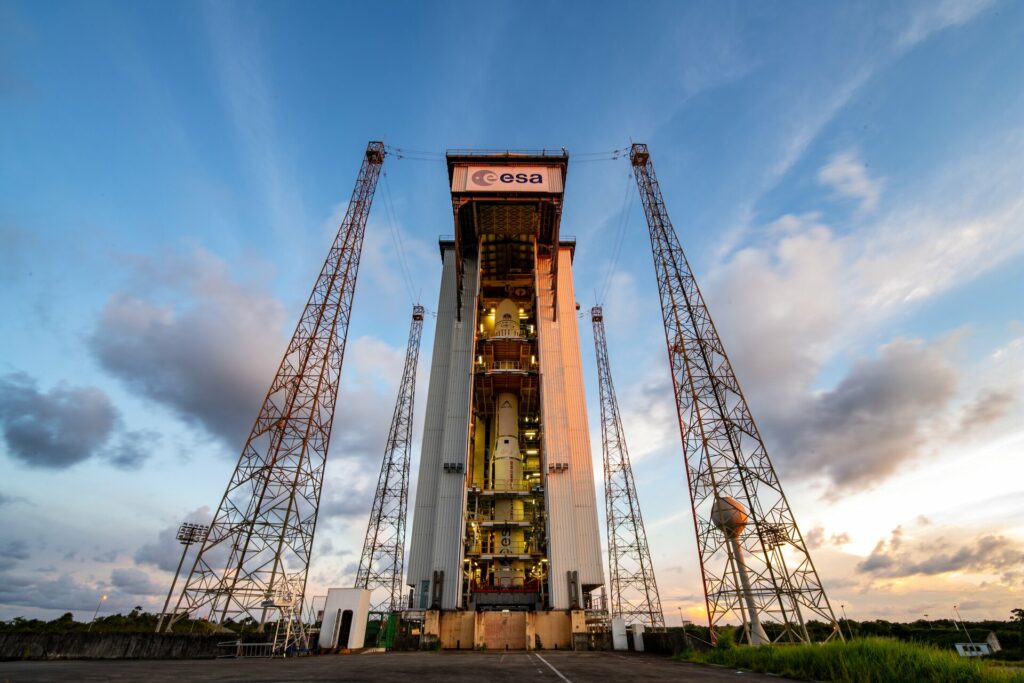
Finally, to wrap up the rocket news for today, Arianespace successfully conducted the inaugural launch of the Vega C rocket from French Guiana. This is the first launch of a new rocket out of several expected this year, including SpaceX’s Starship/Super Heavy and United Launch Alliance’s Vulcan.
Vega C isn’t that radical of a design for a new rocket, as designs go. What is new are the first, second, and fourth stages. The first stage is a P120C, a slightly bigger version of the P80 flown on the current Vega rocket. The P120C will be used as side boosters on the Ariane 6 rocket. The second stage is also a slightly bigger version of the one on Vega, with 40 tons of propellant compared to the 23 tons on Vega. The third stage of Vega C is the same. The fourth stage of Vega C is called Avum+ because it has more fuel than the one on Vega. The biggest difference on Vega C is its payload fairing, which is about twice as big in volume compared to Vega’s, allowing Vega C to launch bigger single satellites or lots of small- to medium-sized satellites to different orbits.
Because this is a new rocket and despite the seemingly modest upgrades, Vega C carries a traditional new rocket payload called LARES-2. LARES-2 is basically a big nickel ball covered in retro reflectors that will be used to measure a property of general relativity called frame dragging. Lasers on the ground will fire on the satellite, and instruments will then measure how long the light took to return. LARES-2 also carried six CubeSats, which will conduct different science experiments.
The launch occurred at 13:13 UTC and was successful.
Side note: The first LARES satellite was launched in 2012 on the first launch of the original Vega.
Coming up, we switch from all of these rockets to some planetary science.
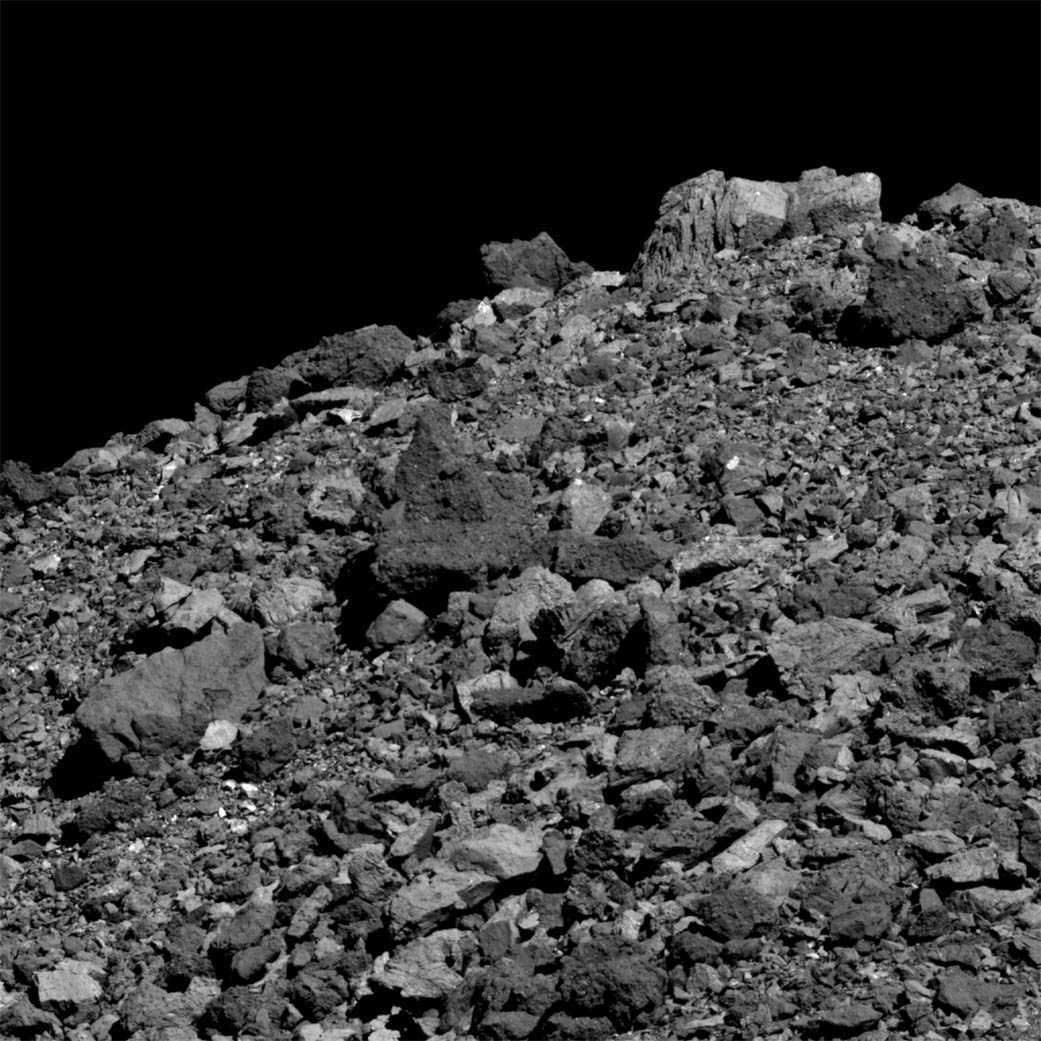
Research papers on Bennu have been coming out in droves these days as scientists analyze all the data collected by the OSIRIS-REx mission, and we have not one but two new papers today.
First up, in a new paper published in the journal Science Advances, a team of scientists characterized the layer of rock just below Bennu’s surface. They found that this layer is, as expected, loosely bound rock bits. They also found that this layer contains twice the void space as the overall asteroid. Lead author Kevin Walsh explains: The low gravity of rubble-pile asteroids such as Bennu weakens its near-subsurface by not compressing the upper layers, minimizing the influence of particle cohesion. We conclude that a low density, weakly bound subsurface layer should be a global property of Bennu, not just localized to the contact point.
Many of our community will recall that the Touch-and-Go portion of the mission did more than just “boop” our rocky little asteroid. The sampling arm actually plunged about half a meter into the asteroid itself, basically because of all that loose rock and void space. Not only that, but images taken by an onboard camera revealed the displacement of a 40-centimeter rock.
Oh, and that sample collection left behind a 9-meter-long elliptical crater. More on that research can be found in a companion paper published in the journal Science. We’ll have links to both papers in our show notes at DailySpace.org.
The rubble pile nature of asteroids like Bennu and the Hayabusa2 target Ryugu presented scientists with a new mystery to solve. Before the arrival of those two missions at their targets, astronomers expected to see a relatively smooth and dusty surface, sort of like our Moon. Instead, they found tons and tons of small rocks and boulders and dust… so many rocks and boulders. But that dust was intriguing.
And it turns out that rubble pile asteroids are not static in shape, but they are static when it comes to dust. In a new study published in Nature Astronomy, scientists detail the calculations and modeling done to understand the nature of dust in space, particularly at these rubble pile asteroids. First off is the action called “electrostatic lofting. Co-lead author Xu Wang explains: …as the sun’s rays bathe patches of porous regolith, negative charges start to build up on small grains of dust. Those charges will accumulate until, suddenly, the particles burst apart, like two magnets repelling each other.
And these grains of dust can fly away at more than eight meters per second. But from the models, this mechanism only works on smaller asteroids, where these grains of dust can actually be lost to space. That loss causes more erosion as more of the surface is exposed to stellar winds and sunlight, until eventually, the asteroid will be clean of dust but be covered in, well, rocks and rocks and rocks and boulders and rocks.
Oh, and this strange electrostatic scrubbing effect could cause changes in the asteroid’s orbit as well, and we’ll know more about how that could work after the Double Asteroid Redirection Test does more than boop a tiny asteroid moonlet.
Now let’s get away from Bennu – will we ever really get away from Bennu around here? – and talk about the first exoplanet discoveries.
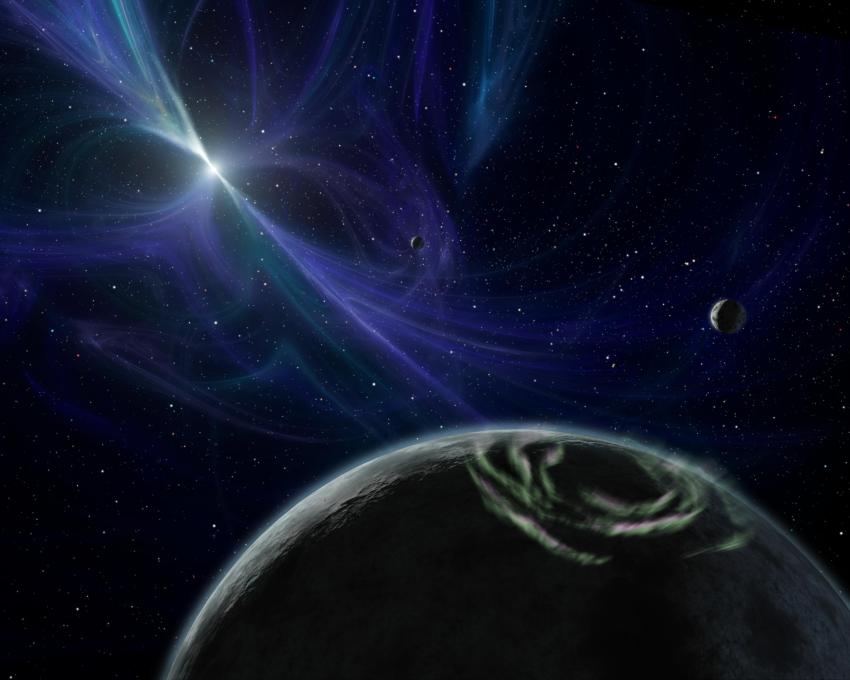
It has been thirty years since the first exoplanets were detected. Just as Beth and I graduated from high school, scientists announced the discovery of at least three rocky planets orbiting a pulsar cataloged as PSR B1257+12. In the years since that wild discovery, only a handful of pulsars have been found to host exoplanets. And these pulsars do not seem like good places to have planets anyway. The violent conditions that go along with pulsars – including jets of high-energy particles getting released like rail guns at regular intervals – have led to exotic planets, including one made of diamond.
Still, despite the low rate of detection, that hasn’t stopped scientists from looking, and now a group of astronomers has conducted the largest search yet for exoplanets orbiting pulsars. The results were presented at the National Astronomy Meeting earlier this week. Per the press release: …the team looked for signals that indicate the presence of planetary companions with masses up to 100 times that of the Earth, and orbital time periods between 20 days and 17 years.
And they found ten potential detections. The most promising are two possible planets orbiting pulsar PSR J2007+3120 which have potential orbits of 1.9 and 3.6 years. And while the research didn’t find evidence of any particular bias for planet mass or orbital period, many of the planets have highly elliptical orbits. That result indicates that the formation process may be very different from traditional star systems like our own.
It’s kind of amazing that we haven’t really researched these strange planets in all this time, but we’re excited to see where this research leads.
And now, we return to the land of rockets as Erik goes back in time for our weekly rocket history segment.
This Week in Rocket History
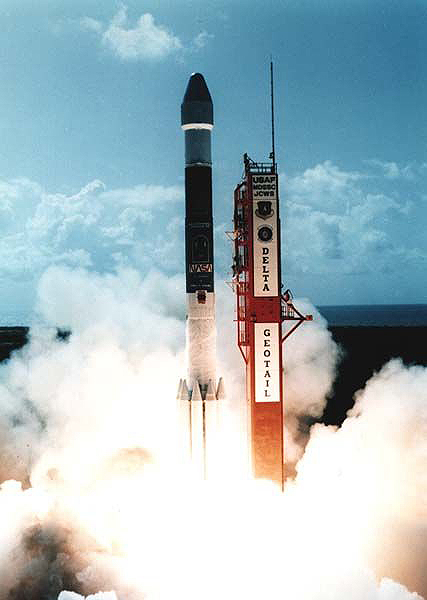
It’s the last Rocket History of the season, and we’re ending on a good note with Japan’s GEOTAIL mission. This satellite was a collaboration between the Institute of Space and Astronautical Science of Japan (ISAS) – the predecessor of the Japan Aerospace Exploration Agency (JAXA) – and NASA. Prior to the founding of JAXA in 2003, ISAS worked on satellites, the National Space Development Agency of Japan (NASDA) worked on rockets and human spaceflight, and the National Aeronautics Laboratory (NAL) was responsible for flight research.
GEOTAIL’s mission was to study the Earth’s magnetic field in the area opposite the Sun, called the magnetotail. The magnetotail is the most active part of the magnetosphere because it interacts with the solar wind, which stretches the tail out. GEOTAIL was primarily an ISAS mission; NASA’s major contribution to the project was the Delta 2 launch vehicle. NASA also provided several of the spacecraft’s instruments.
An interesting connection between the Delta rocket and the Japanese space program is that Japan’s first large orbital rocket after its early converted sounding rockets was a license-built Delta first stage and boosters with a Japanese-built second stage engine. Over time, the rocket evolved into versions with more and more Japanese components, starting with a liquid hydrogen/liquid oxygen second stage.
To properly measure the magnetotail, the satellite was launched into an orbit so high that the easiest way to describe it was in terms of Earth radii instead of kilometers. The intended orbit was between 10 Earth radii at perigee and 220 Earth radii at apogee. To get there, the Delta sent GEOTAIL into a lunar flyby trajectory, stealing some momentum from the Moon to fling the satellite into a higher orbit – just like Chell in Portal. The first lunar flyby set up the trajectory for a second, pushing the apogee even further out.
GEOTAIL has accomplished a lot since it was launched on July 24, 1992. GEOTAIL flew by the Moon fourteen times between 1992 and 1994 to keep its orbit in the magnetotail as the Earth orbited around the Sun. The satellite is still operational today, with a current apogee of about 30 Earth radii.
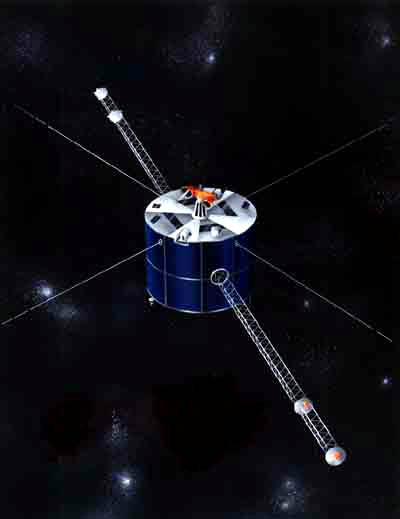
Speaking of the Moon, Earth’s natural satellite was also used to fix the spacecraft. In 1993, one of GEOTAIL’s instruments malfunctioned and despite a lot of troubleshooting, the operations team couldn’t resolve the problem. So, the mission controllers decided to try resetting the instrument, which involved deliberately flying the spacecraft into the Moon’s shadow while disconnected from battery power in the hopes that this would force a reset. Happily, the fix worked, and the instrument started functioning again.
Huh. Sometimes unplugging something and plugging it back in really is the solution.
GEOTAIL continues to produce science thirty years after its launch. In 2016, GEOTAIL worked with NASA’s Magnetic Multiscale Mission to investigate magnetic reconnection. In this process, the magnetic field lines from different sources break and attach to each other, causing bursts of energy. And in 2018, GEOTAIL discovered special waves in the magnetic field called Kelvin Helmholz waves, which transport solar plasma and other energy to the magnetosphere.
Besides GEOTAIL’s mission in the magnetotail, the satellite has contributed to lunar science by measuring the Moon’s weak atmosphere during all those flybys.
Also this week in Rocket History, Robert Goddard launched the fourth liquid-fueled rocket ever on July 17, 1929, from his Aunt Effie’s farm in Auburn, Massachusetts. This happens to be 39 years 364 days before the launch of Apollo 11 on July 16, 1969, which is a total coincidence but is quite nice given how significant both events were.
The flight lasted just eighteen and a half seconds, which included sitting on the launch structure for thirteen seconds before the rocket started to lift, and reached an apogee of 27 meters, traveling 52.1 meters downrange. Onboard the rocket was a small camera, a thermometer, and a barometer, all of which were recovered intact after the flight, making this the first instrumented rocket launch.
Known as the Goddard 3 launch vehicle, the rocket was quite small by today’s standards, measuring just 3.5 meters in length and 66 centimeters in diameter. It weighed about 14.5 kilograms and was fueled by 6.4 kilograms of gasoline and 5 kilograms of oxygen, for a total loaded weight of 25.9 kilograms.
The flight was reportedly bright and noisy, which attracted a lot of attention and resulted in a lot of “Moon rocket” publicity.
Robert H. Goddard went on to develop increasingly sophisticated rockets before he passed away on August 10, 1945. His contributions to the field of space flight were largely unrecognized in the United States until the dawn of the “Space Age”. On May 1, 1959, NASA’s Goddard Space Flight Center in Greenbelt, Maryland was established, and on September 16, 1969, the 86th Congress authorized the issuance of a gold medal in the honor of Professor Robert H. Goddard.
Statistics
And now, for some statistics.
The number of toilets in space is eight: four on the ISS, one on Soyuz MS-21, one on the Crew Dragon Freedom, one on Tianhe, and one on Shenzhou 14.
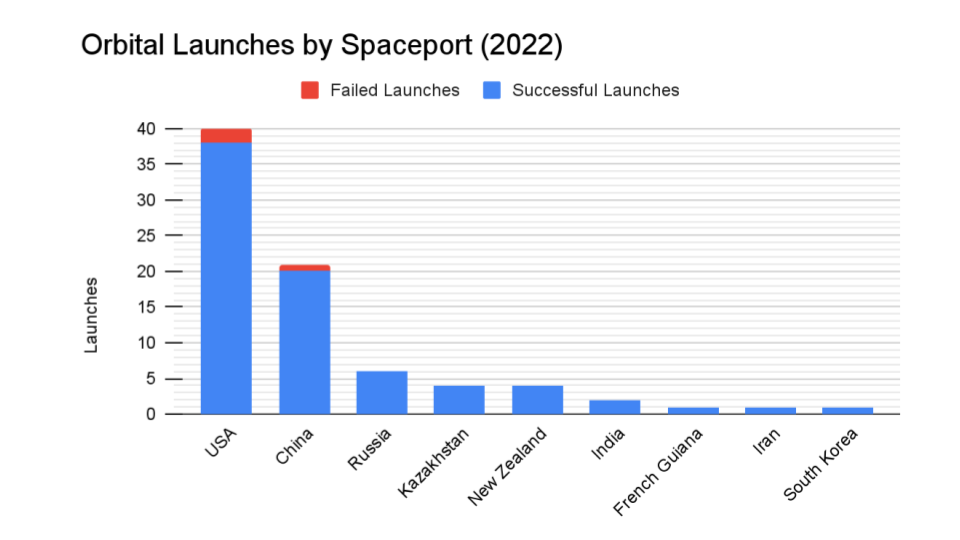
We keep track of orbital launches by launch site, also called spaceport. Here’s that breakdown:
USA: 40
China: 22
Russia: 6
New Zealand: 5
Kazakhstan: 4
French Guiana: 2
India: 2
Iran: 1
South Korea: 1
From those 82 launches, a total of 1,239 spacecraft have been put into orbit in 2022, with 861 of them being Starlinks, which is about seven out of every ten satellites launched so far this year. There have also been fourteen humans sent to orbit this year onboard four launches. Finally, there have been five two-person EVAs, conducted by seven astronauts.
Your random space fact for the week is that Robert Goddard’s fourth liquid rocket launch from earlier in the show resulted in the local fire marshall banning future test flights from Aunt Effie’s Farm, so Goddard moved to New Mexico to continue his research.
This has been the Daily Space.
You can find more information on all our stories, including images, at DailySpace.org. As always, we’re here thanks to the donations of people like you. If you like our content, please consider joining our Patreon at Patreon.com/CosmoQuestX.
Credits
Written by Pamela Gay, Beth Johnson, Erik Madaus, and Gordon Dewis
Hosted by Pamela Gay, Beth Johnson, and Erik Madaus
Audio and Video Editing by Ally Pelphrey
Content Editing by Beth Johnson
Intro and Outro music by Kevin MacLeod, https://incompetech.com/music/


 We record most shows live, on Twitch. Follow us today to get alerts when we go live.
We record most shows live, on Twitch. Follow us today to get alerts when we go live.